
![]()
Every Sunday, we bring together a collection of easy-reading articles from analytical to how-to to photo features in no particular order that did not make our regular daily coverage. Enjoy!
Marine Biologist’s Blackwater Photos Uncover Hidden Ocean Creatures – My Modern Met

“Originally, blackwater was meant to be photos taken while drifting over pelagic water–deep ocean, not over a continental shelf–at night,” Jeff Milisen explains to PetaPixel. “The first blackwaters were conducted in the early ’80s and depicted gelatinous plankton. The deeper, the better. Today, blackwater has become synonymous with strange, often smaller, ocean life taken while drifting at night.”
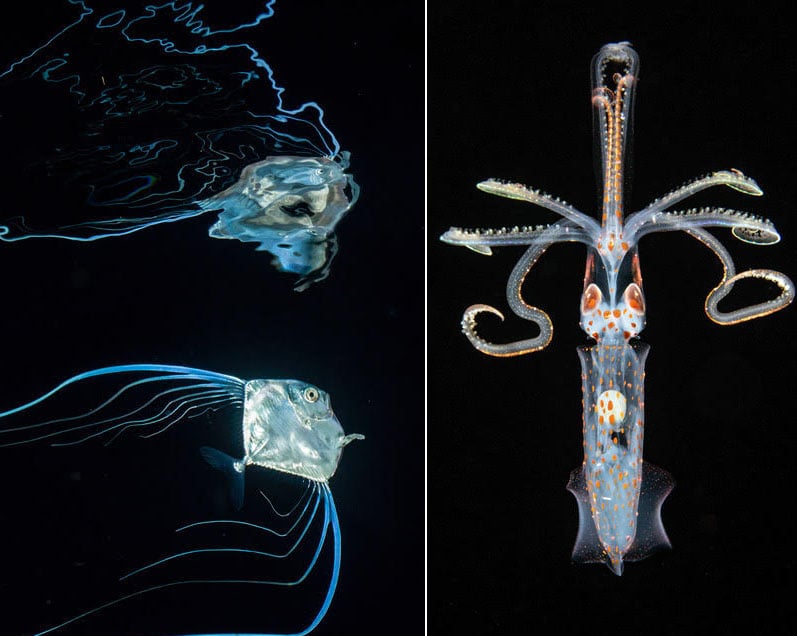
There are few advantages to photographing at night. In deep water, the strangest animals are called “vertical migrators.” These animals use the cover of darkness to hide during the day by sinking thousands of feet underwater. There isn’t a lot for them to eat at those depths, so every evening, they follow the fading light and ascend to the surface to feed off the abundance of life up there. Of course, it doesn’t hurt that night sets these animals against a striking black background.
There are a few places that you can do blackwater, but Milisen is biased towards his home at Kona, Hawaii. Here the diver can have access to some of the deepest water, often exceeding 6,000 feet or more. That means one can see a fair slice of every trophic level that the ocean provides, from the tiniest copepod to sharks, swordfish, gamefish, and everything in between. Just last night, he was watching dolphins demolishing schools of squids. You don’t get that sort of interaction anywhere else.
Milisen shoots with a Canon 7D MK II with a Canon 60mm macro lens in an Ikelite housing.

“Sure, focusing mechanisms on mirrorless cameras have come a long way, but the one place they falter is when shooting low contrast subjects in low light,” says Milisen. “In blackwater, everything is in constant motion, so it is critical to have super-fast, super-accurate focusing. You really only get that out of the dedicated phase-detect sensors on DSLRs.
“Someday, mirrorless cameras will get there, but until then, DSLRs are still king of blackwater. The lens is no accident either. One of the big challenges in blackwater is finding the animals and then finding the animals again in your viewfinder. Often the animal may be swimming toward you, or at least it may be really close.
“When shooting just about anything else, there is some substrate that gives clues as to what depth the subject is going to be from the camera, but on blackwater, there is nothing, so you need every advantage you can get. The 60mm has a good focal length, but it also has a tiny minimal focusing distance which goes a long way toward helping find the animal through the camera.

“Finally, we have to talk about lighting. To expose the subjects for the images, I use two Ikelite strobes. However, I use a mix of a wrist-mounted Big Blue 4800 lumen spotting light and two on-camera 2000 lumen Sola focusing lights set to flood to find the animals. Light is king when trying to create enough contrast for your camera to work.”
Jeff Milisen’s A Field Guide to Blackwater Diving in Hawai’i is available here.
Sony Cameras Accounted for 20-30% at the Tokyo Olympics – sonyalpharumors
The Nihon Keizai Shimbun reports that at the Tokyo Olympics 2020, “Sony has opened a hole in the two strongest systems of Canon and Nikon in the professional market (news camera). It seems that the usage rate of Sony machines at the Tokyo Olympics was 20 to 30%.”
Read also:
Life in the Blink of an Eye, or: Shooting 50MP Olympics Photos at 30fps
Majority Share of the Olympics Press Cameras Were Canon
Photographer David Burnett Switches to Sony After 40 Years of Canon
Black in White America 1963-1965 – Magnum
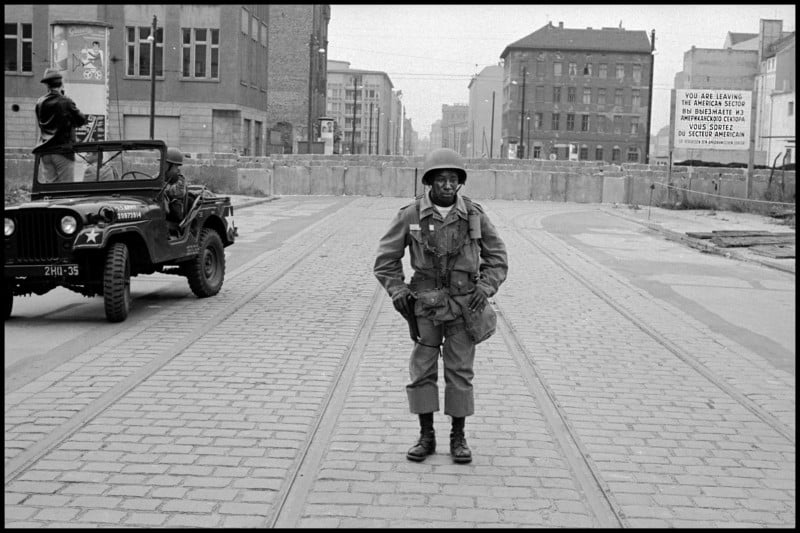
In 1962, white photojournalist Leonard Freed was on assignment in Berlin. He photographed (above) an African American soldier standing in front of the wall. The irony of this soldier defending the USA on foreign soil while African Americans at home were fighting for their civil rights resonated with Freed.
Written alongside the above photograph:
We, he and I, two Americans. We meet silently and part silently. Between us, impregnable and as deadly as the wall behind him, is another wall. It is there on the trolley tracks, it crawls along the cobblestones, across frontiers and oceans, reaching back home, back into our lives and deep into our hearts: dividing us, wherever we meet. I am White, and he is Black. – Leonard Freed (1929-2006)
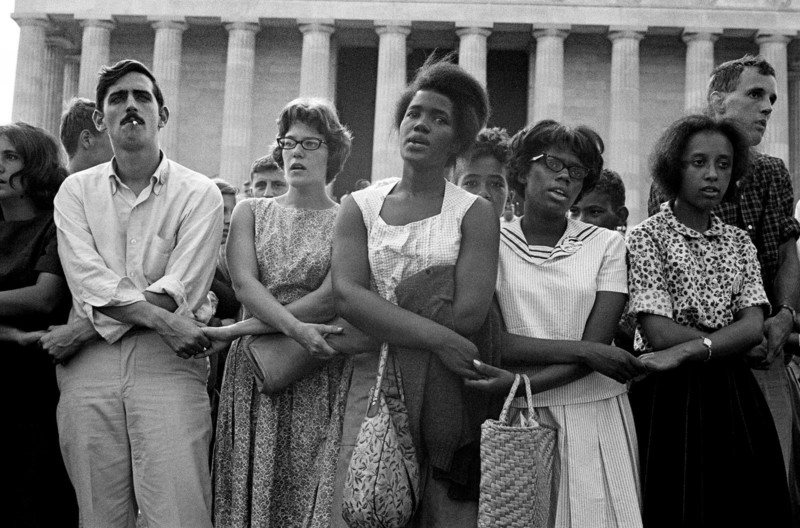
On his return to the States in 1963, he photographed the March on Washington and began a journey across the United States to document black communities in the North and South. From 1963 to 1965, he captured the plight of African Americans, the great struggle for racial equality within a deeply segregated, racist society.
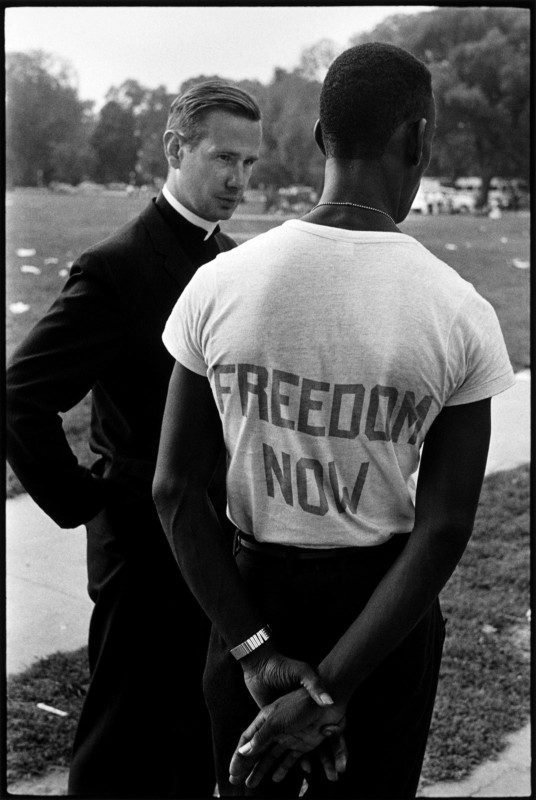
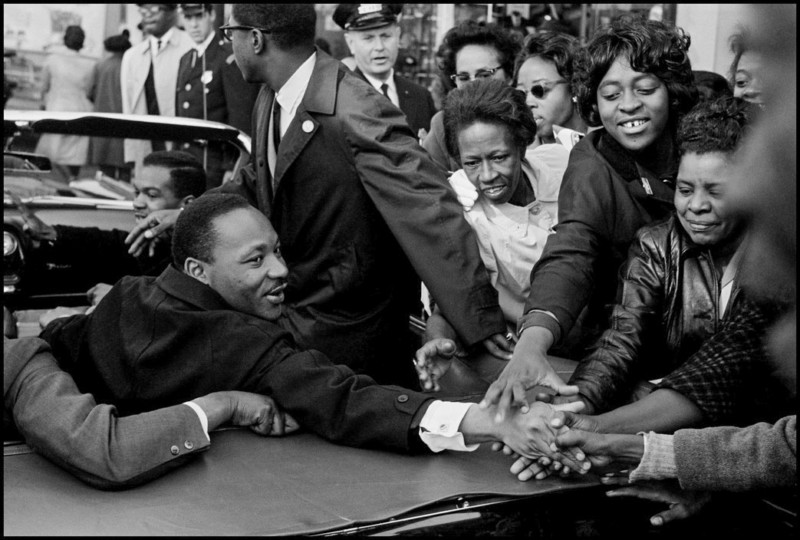
A fresh and expanded edition, Black in White America, 1963-1965, is the definitive collection of Leonard Freed’s seminal and timely Civil Rights photo essay first published in 1968. It is printed with a foreword from fellow Magnum photographer Eli Reed.
What Is a Green Screen and How Does It Work? — MUO

It’s not always possible to shoot photos or videos in exciting locations with unique backgrounds. They could be far away or inaccessible. Or worse, nonexistent, like fantasy or science fiction settings.
Check out the link above how the green screen solves that problem by putting in a kind of placeholder for the background.
These Unclaimed Afghan Studio Portraits Bear Witness to Decades of History — NPR
Today, treasured away in the back rooms of Kabul’s photo studios is a colorful mix from over the years of charming portraits, never collected or paid for. They’re photographs of Afghans left behind — soldiers and their generals, nervous children captivated by the camera, popular singers, female police officers, poets, scientists, and artists.
Photography was banned before, and whether these studios will survive another period of Taliban rule remains to be seen.
Photographer George Kalinsky’s Work Is Hall of Fame Worthy. But Even At 85, He Says He Isn’t Finished Yet – Forbes
Thus, as Madison Square Garden’s official photographer since the 1960s, Kalinsky was able to preserve for future generations a window into the 1969-70 and 1972-73 New York Knicks NBA championship teams, a view that looms even more important considering the Knicks lost in The Finals twice in the 1990s but haven’t won the whole thing since then.
This Ghanaian Photographer Has Raised $1m to Build Africa’s Largest Photo Library After Several Rejections – Face2FaceAfrica
“I filled up my entire apartment with books, then I rented a storage unit,” Ghanaian photographer Paul Ninson tells Face2Face Africa. “Then another. Then another. I’ve collected 30,000 books so far. Enough to build the largest photo library in Africa. The books are currently in a shipping container en route to Ghana. But as my collection has grown, so has my dream. I want to build more than just a library. I want to build an entire learning center. A home for photography in Ghana.”
With the help of Brandon Stanton of Humans of New York (who also helped him study at ICP in New York) Ninson has raised over $1 million in crowdfunding toward the project. He has also received a land pledge from a Ghanaian legislator.
Photographer Provides Insight on Legal Issues Photographers May Encounter – Legal Reader
The Beginning of Photography: The Drama of 1839 – DPreview
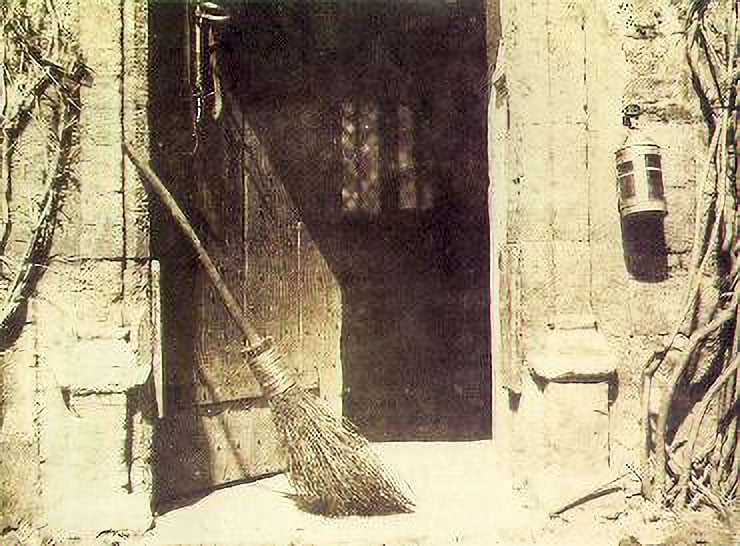
Dr. Roger Cicala writes:
So, who was the real Father of Photography? … Niepce created the first permanent images using a camera. Daguerre perfected the technique that allowed it to become mainstream (and was the only one to benefit financially). Talbot’s different technique allowed multiple copies of images to be mass-produced, and the negative-image to positive-print is the basis for all photography from the 1800s until digital.
Inner visions: a Dreamlike Trip Through New Mexico – in Pictures – The Guardian
Shirin Neshat has been crowned a Photo London Master of Photography thanks to her black and white portraits of people from the American southwest.
Royal Photographer Shares’ Snap Judgments’ from Working with Harry, William, the Queen and More — People
30 Astonishing Pictures from the Nat Geo Archives – National Geographic

See some of the unforgettable images an editor discovered in Nat Geo’s historic photography collection.
Picture Post: How One British Magazine Blew up Photography – The Guardian
Picture Post was a photojournalistic magazine published in the United Kingdom from 1938 to 1957. It is considered a pioneering example of photojournalism and was an immediate success, selling 1,700,000 copies a week after only two months. It has been called the UK’s equivalent of Life magazine
“Picture Post was the brainchild of Hungarian émigré Stefan Lorant, whose editorship of German magazine Münchner Illustrierte Presse led to Hitler imprisoning him. He brought his anti-fascist, socialist sympathies with him to Britain – as well as a troupe of superb photographers, schooled by the European photojournalist tradition and able to frame these islands with an outsider’s eye,” writes The Guardian.
iPhone 13 Pro Camera Review: Tanzania – Austin Mann
Photographer Austin Mann has published an in-depth review of the iPhone 13’s camera. He has tested the macro mode, increased telephoto zoom, and Cinematic mode in the picturesque Ruaha National Park, Tanzania.
Magnum announces New Nominees, Associate and Member at its 74th AGM in Paris — Magnum
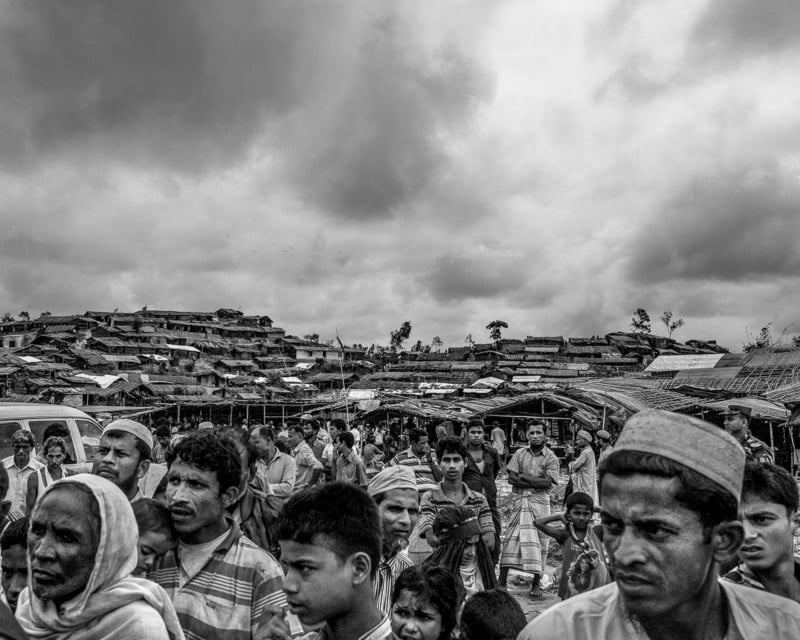
Magnum Photos has welcomed two new Nominees Myriam Boulos (Lebanon) and William Keo (France), at its 74th Annual General Meeting (AGM).
Additionally, the following motions were passed regarding status changes of photographers already within Magnum:
Nanna Heitmann: Nominee to Associate
Enri Canaj: Associate to Member
A decision was made to take in the Chris Killip archive. Magnum will now represent the archive of the British photographer who passed away in 2020.
Photo of the Week
Joke of the Week
Attendance at the country circus was going down, so the owner decided to hire a photographer to take publicity photos of the wild animals.
The two people who applied to the ad. were a woman and a man.
The owner asks the woman to enter the lions’ cage and show him that she would be comfortable in such a situation. The woman does so and starts speaking softly with the big cats. Soon they are all sitting down around her, and the biggest one is licking her face.
The manager is amazed and turns to the male photographer to ask, “Can you do that?”
“Sure,” he replies, fidgeting with the manual focus ring, “but, er, you will have to get the animals out first.”
Quiz of the Week
1.) Who discovered hypo, which is used in the darkroom after development for fixing prints by dissolving and removing silver salts (halides) that were not affected by light on the printing paper when it was exposed?
2.) There are three main types of flashes on the market:
a.) Speedlights that typically mount on the hot shoe
b.) ___________
c.) Pack-and-head systems
3.) Who recently launched a 40mm Macro f/2.8 APS-C Lens for Multiple Mounts for only $100?
4.) Which camera company celebrated its 80th anniversary in 2021? Hint: a few of their cameras are still sitting on the moon.
5.) Did a photo book published in 1909 show how to remove freckles, open closed eyes and make stout people look slimmer?
Answers
1.) Sir John Hershel, an acquaintance of Talbot’s and one of the premier scientists of the day.
2.) Monolights
3.) TTArtisan
4.) Hasselblad, the Swedish company which launched the first Hasselblad camera, the HK-7, in 1941.
5.) Yes, it was published by the American School of Art and Photography in Scranton, PA, and edited by the school’s president, James B. Schriever.
Why I Like This Photo – Ami Vitale
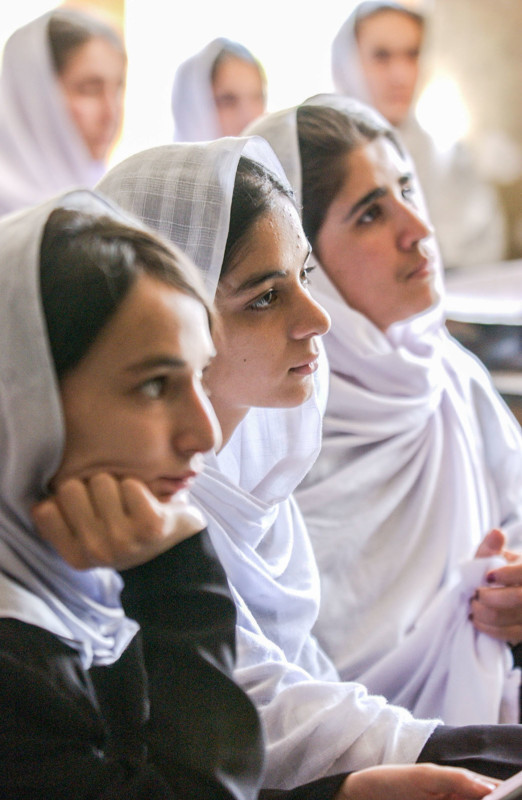
This photo is profoundly moving to me in light of the current situation in Afghanistan. It represents a fleeting moment of hope when girls were finally given the opportunity to have an education after decades of war and brutal repression by the Taliban. It was taken in 2002 in Kabul, a year after the Taliban regime had collapsed.
The Taliban did not let girls go to school or allow many women to work under their rule from 1996 to 2001. Once again, tragically, the emerging government has made clear that it intends to severely restrict these educational freedoms that many women and girls experienced over the past 20 years. Extraordinary gains have been made in the last twenty years, and this image represents the quiet heroism of the students, teachers, and the communities who supported girls’ education.
I remember making this photo on a sunny summer day in a room packed with young women listening with rapt attention to their teacher. I was immediately drawn to the young woman in the middle of the frame, whose expression seemed to betray a certain war weariness and yet, at the same time, reveal some hope for the future.
I chose to use a 70-200 mm lens and composed it so that the students were framed diagonally to be able to make the eye jump from one face to the other. The three faces in the foreground and the 3 out-of-focus faces in the background give the effect of a tightly packed class full of students. It’s interesting that though I was making photos in color, their clothing and the light in the room created a feeling that this was a black and white photo. The colors and the light had a certain austerity, yet the soft radiance of the young woman’s expression brought light and hope to the image. I am again reminded of the power of human resilience in this photo.
Ami Vitale is a Nikon Ambassador and National Geographic magazine photographer, writer, and filmmaker who has photographed in more than 100 countries. Instyle Magazine named Vitale one of 50 Badass Women, a series celebrating women who show up, speak up and get things done. She is a five-time recipient of World Press Photos, including 1st Prize for her 2018 National Geographic magazine story about a community in Kenya protecting elephants. Panda Love on the secret lives of pandas is her best-selling book that has recently been published. She is a founding member of Ripple Effect Images, an organization of renowned female scientists, writers, and photographers working to create powerful stories about the hardships women in developing countries face and the programs that can help them.
Quote of the Week – Myriam Boulos
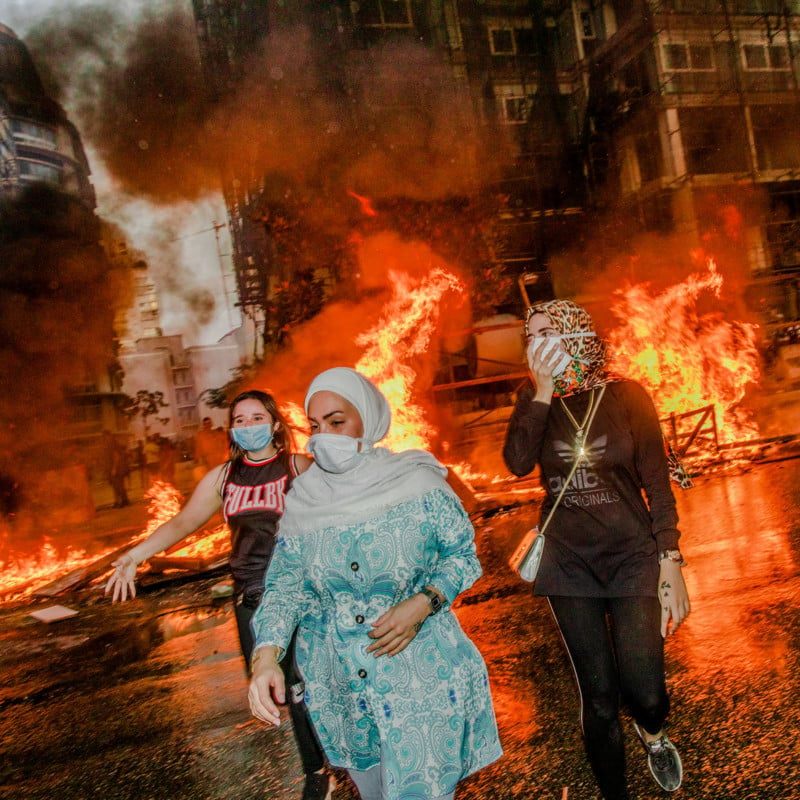
Photography is really like therapy for me* — Myriam Boulos
*From an interview on Art Breadth, Myriam Boulos on Photography, Documenting Lebanon and Social Justice.
Myriam Boulos (b.1992) from Lebanon was inducted as a new Nominee to Magnum this week at its 74th Annual General Meeting (AGM) in Paris.
To see an archive of past issues of Great Reads in Photography, click here.
We welcome comments as well as suggestions. As we cannot possibly cover each and every source, if you see something interesting in your reading or local newspaper anywhere in the world, kindly forward the link to us here. ALL messages will be personally acknowledged.
About the author: Phil Mistry is a photographer and teacher based in Atlanta, GA. He started one of the first digital camera classes in New York City at The International Center of Photography in the 90s. He was the director and teacher for Sony/Popular Photography magazine’s Digital Days Workshops. You can reach him via email here.
Image credits: All photographs as credited and used with permission from the photographers or agencies. Portions of header photo via Depositphotos.

